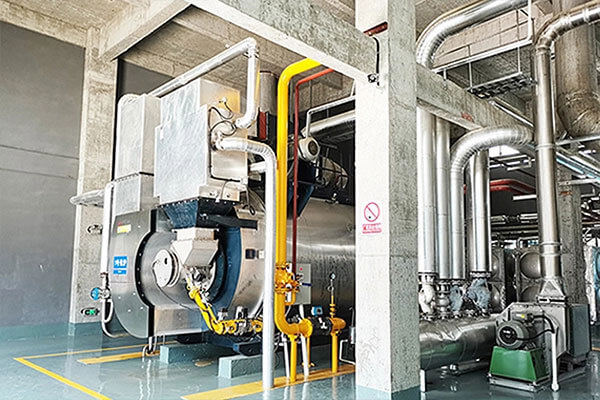The chemical industry relies on steam boilers to drive critical processes like chemical reactions, distillation, drying, and sterilization. Choosing the optimal steam boiler is a strategic decision that impacts production efficiency, operational costs, and compliance with safety and environmental standards. Drawing insights from industry expertise and case studies (including EPCB Boiler’s proven solutions), this guide outlines actionable steps to select a steam boiler tailored for chemical-industry applications.
Core Requirements for Chemical Plant Steam Boilers
Chemical production demands boilers capable of delivering high-pressure steam (often exceeding 20 bar) and maintaining stable performance in corrosive environments. Key operational needs include:
- High Thermal Efficiency: Modern gas-fired boilers achieve 85–95% efficiency, reducing fuel consumption and operating costs.
- Material Durability: Stainless steel or alloy-lined components resist corrosion from aggressive chemicals.
- Adaptability to Load Fluctuations: Batch processing requires boilers to adjust steam output rapidly without efficiency loss.
Boiler Types for Chemical Plants:
- Fire-Tube Steam Boilers (e.g., EPCB’s WNS Series): Compact design, ideal for small to medium steam demands (up to 75 tons/hour). Combustion gases pass through tubes surrounded by water, ensuring quick steam generation.
- Water-Tube Steam Boilers (e.g., EPCB’s SZS Series): Suited for high-pressure applications. Water circulates inside tubes heated externally by combustion gases, offering superior safety and efficiency for large-scale operations.
Evaluating Efficiency: Beyond Basic Metrics
While thermal efficiency is critical, chemical plants must prioritize system-level performance:
- Direct vs. Indirect Efficiency Measurement:
- Direct Method: Calculates efficiency based on steam output and fuel input.
- Indirect Method: Identifies heat losses (e.g., flue gas temperature) to optimize combustion.
- Heat Recovery Systems: Economizers preheat feedwater using waste heat from flue gases, improving efficiency by 10–15%.
EPCB Case Study: A chemical plant upgraded to an EPCB SZS water-tube boiler with integrated economizers, achieving a 60% increase in steam output and 50% reduction in fuel costs.
Fuel Selection and Operational Costs
Natural gas is the preferred fuel due to its clean combustion, low emissions, and cost-effectiveness. However, availability and infrastructure dictate alternatives:
- Liquefied Petroleum Gas (LPG): Requires secure storage but is viable in regions lacking natural gas pipelines.
- City Gas: Ideal for urban plants with existing supply networks.
Cost Considerations:
- Fuel Storage and Transport: LPG incurs higher logistics costs than piped natural gas.
- Compliance: Ensure boilers meet local emission regulations (e.g., NOx and SOx limits).
Safety and Regulatory Compliance
Chemical plants must adhere to stringent safety standards to prevent accidents and ensure uninterrupted production:
- ASME Certification: Non-negotiable for pressure vessel integrity. EPCB boilers comply with ASME BPVC standards.
- Explosion-Proof Designs: Critical in environments with flammable chemicals. Features include flame failure detection, automatic shutdowns, and reinforced combustion chambers.
- Regular Maintenance: Fire-tube boilers require frequent tube cleaning to prevent soot buildup, while water-tube designs allow easier access for inspections.
Total Cost of Ownership (TCO)
- Initial Investment: Fire-tube boilers are cost-effective for small plants, while water-tube models suit high-pressure, large-scale needs.
- Maintenance Costs: EPCB’s modular systems enable partial shutdowns for repairs, minimizing downtime.
- Energy Savings: High-efficiency boilers with smart controls reduce long-term fuel expenses.
Lessons from EPCB’s Chemical Industry Projects
EPCB Boiler’s solution for a mid-sized chemical plant highlights best practices:
- Challenge: The plant needed a compact, high-efficiency boiler to replace outdated equipment while adhering to strict emissions rules.
- Solution: EPCB installed a custom WNS fire-tube boiler with low-NOx burners and AI-driven controls.
- Outcome: Steam output increased by 60%, emissions dropped below regulatory limits, and annual maintenance costs fell by 30%.
Conclusion: Partnering for Success
Selecting a steam boiler for the chemical-industry requires aligning technical specs with operational needs. Key takeaways include:
- Prioritize ASME-certified boilers with corrosion-resistant materials.
- Opt for modular systems to balance scalability and downtime risks.
- Collaborate with experienced suppliers like EPCB Boiler for end-to-end support, from design to maintenance.
By focusing on efficiency, safety, and lifecycle costs, chemical plants can ensure reliable steam supply while meeting sustainability goals.
Get your best price
Quickly compare 3 FREE quotes
- Engineer quick quote
- The overall delivery speed is fast
- Financial choice
- Low installation costs and cost savings
25 years+ of boiler R&D
More than 20 innovative technologies




